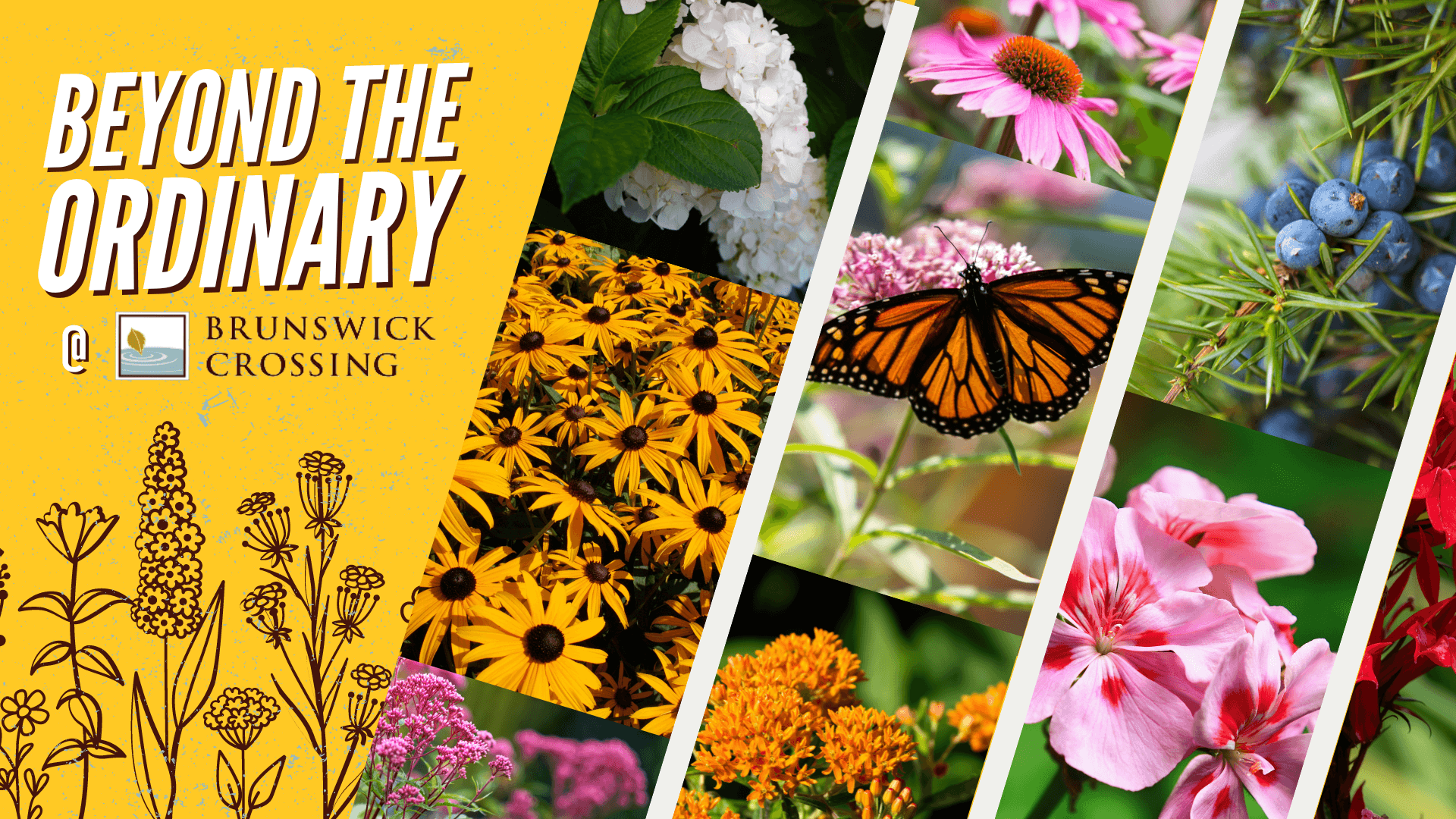In Frederick County, Maryland, specifically in the area around Brunswick Crossing, is home to a great variety of native plants. There are over 1,500 species of plants along the Potomac River, right in Brunswick Crossing’s backyard.
The National Park Service records that the C&O Canal is “one of the most biologically diverse parks in the National Park system, especially regarding plant species.”
Incorporating native Maryland plants into your new DRB Home or Ryan Home can take your exterior finishes to the next level. From groundcovers and ferns to native wildflowers, shrubs, and pollinators, let's explore how these selections can transform your outdoor space beyond the ordinary.
Native Wildflowers: Splashes of Color
Native Maryland wildflowers not only add bursts of color but also support local wildlife, including essential pollinators like bees and butterflies. Imagine the beauty of Black-eyed Susans (Rudbeckia hirta) or the delicate blooms of Butterfly Weed (Asclepias tuberosa) gracing your garden beds, attracting a flurry of activity from bees and butterflies.
Our top picks for native wildflowers to take your Brunswick Crossing home to beyond the ordinary are:
Black-Eyed Susan: Maryland's state flower, is a vibrant native wildflower blooms from early summer to late fall and will brighten your flowerbed with abundant yellow blossoms that reach around 2 to 3 feet tall. Its sturdy stems and bright blooms attract pollinators, making it valuable for pollinator-friendly gardens and cut flower arrangements.
Butterfly Weed: With its brilliant orange flowers, Butterfly Weed typically blooms from early summer to fall, growing up to 2 to 3 feet tall. It's deer-resistant and drought-tolerant once established, making it ideal for water-wise landscaping. Planting Butterfly Weeds adds beauty to your yard while supporting pollinators and wildlife conservation.
Wild Geranium: This dainty pink to lavender-hued flower blooms in late spring to early summer. Beyond its aesthetic appeal, it supports local wildlife and enhances garden ecosystem health.
By incorporating native wildflowers into your landscaping, you're not just creating a picturesque scene; you're also fostering a sustainable environment that contributes to the health and well-being of the local ecosystem.
Shrubs: Adding Structure and Texture
Shrubs are the backbone of any landscape design, providing structure, texture, and often serving as focal points. When selecting shrubs for your flower beds, consider native Maryland species that are adapted to the local climate and soil conditions. From the fragrant blooms of the Virginia Sweetspire (Itea virginica) to the vibrant foliage of the Fothergilla (Fothergilla gardenii), native shrubs offer a diverse range of options to suit every aesthetic preference.
Our Maryland native shrub top picks are:
Spicebush: As a native alternative to forsythia, Spicebush is a multi-stemmed deciduous shrub, which complements ferns and woodland wildflowers. With its bright yellow blooms, they offer early spring interest in semi-shaded gardens with better wildlife value and lower maintenance needs.
Smooth hydrangea: Thriving in moist, rich soils in partial sun or shade, smooth hydrangeas typically bloom in June with white flowers, although pink cultivars have been introduced. Their blooms may also feature a second flush in August or September, blooming on the current season's growth.
Black Huckleberry: Reaching heights of 1.5 to 3 feet and spreading 4 to 5 feet wide, black huckleberry boasts delicate red to pink urn-shaped flowers that bloom from April to May. With fall foliage, they transition from orange to purplish-red. Thriving in sun to partial shade, it prefers acidic, sandy, or rocky soils, forming stabilizing thickets with its shallow, spreading root system, while its edible, sweet berries ripen in July, resembling small, bluish-black blueberries.
Pollinators: Inviting Nature's Helpers
Creating a pollinator-friendly flower bed for your new construction home in Brunswick Crossing isn't just about adding beauty to your landscape; it's also about supporting essential ecosystem services.
Native pollinators, including bees, butterflies, and hummingbirds, play a crucial role in plant reproduction and the production of fruits and seeds. By incorporating plants that attract these pollinators, you're not only ensuring the health and vitality of your garden but also contributing to the broader ecological balance.
Choose native plants like Purple Coneflower, Joe-Pye Weed, and Cardinal Flower to provide nectar and habitat for pollinators throughout the seasons. These plants not only enhance the beauty of your flower beds but also serve as vital resources for declining pollinator populations.
Beyond the Ordinary: Creating a Landscape That Matters
As residents of Brunswick Crossing, we have the opportunity to go beyond the ordinary and create landscapes that are not only visually stunning but also environmentally responsible. By incorporating native Maryland plants into our flower beds, we can create vibrant, biodiverse ecosystems that support local wildlife and contribute to the overall health of our community.
Check out our available home designs to picture your front and side flowerbeds in your new home and schedule an appointment today to visit our four available model homes.




